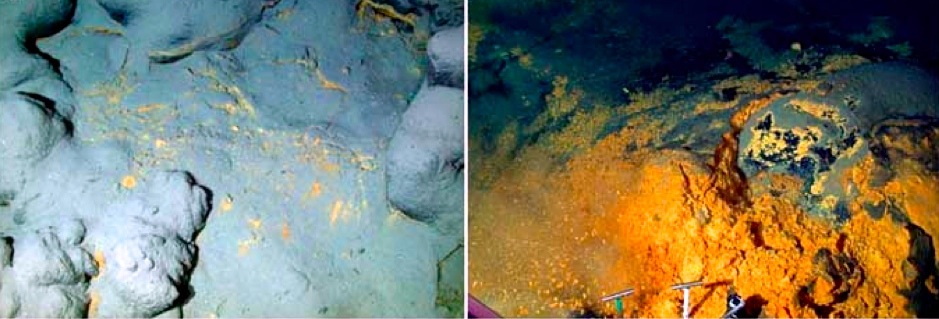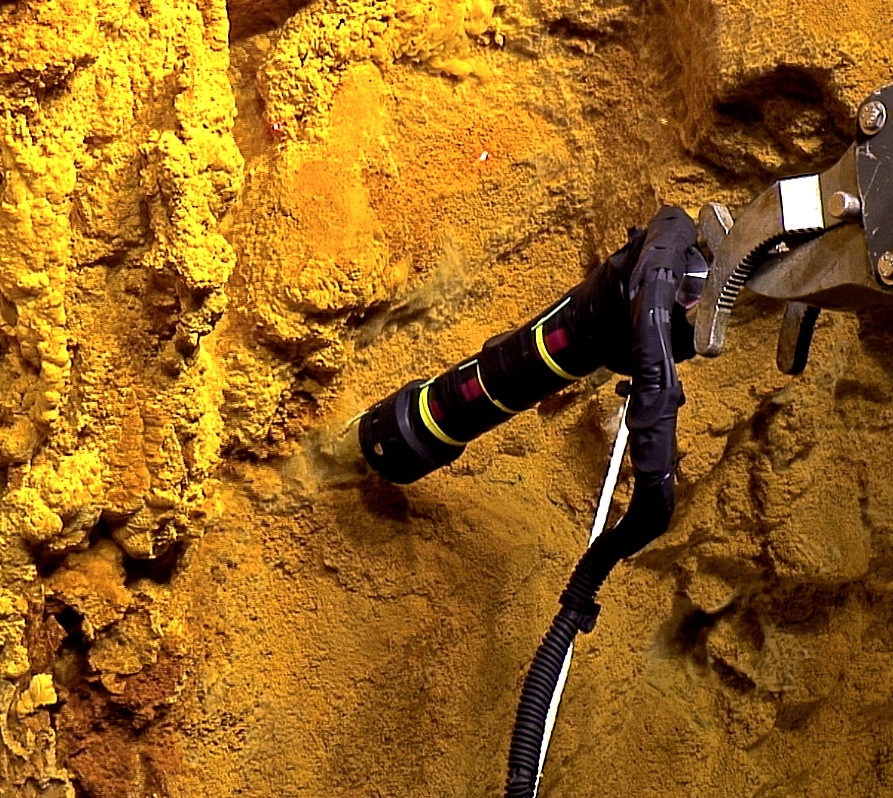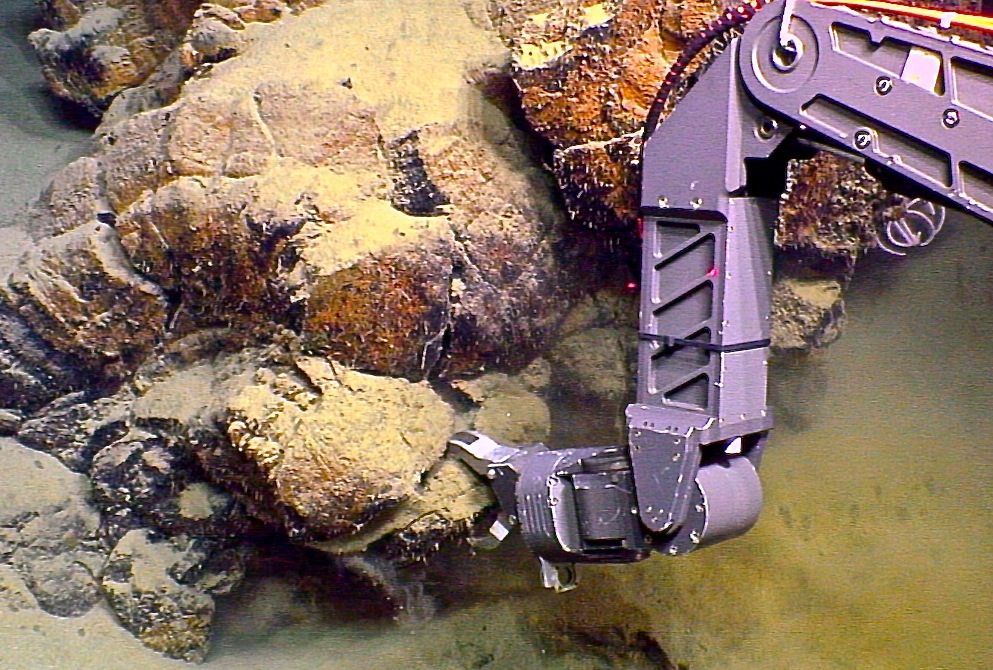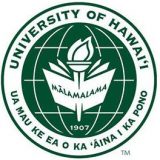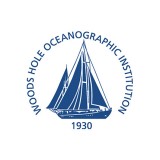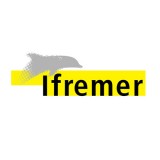Since their discovery in 1987, hydrothermal vent fields at the summit of the volcanic Loihi Seamount, near the island of Hawaii, have been the focus of intense research. But only recently did scientists discover that something unusual and important was also happening at the base of this seamount, 5,000 meters down.
There, previously unknown bacterial communities that feed on iron may be playing unappreciated roles in balancing ocean chemistry. Learning more about them could offer insights on the origin of previously unexplained geological features on Earth, and may even aid in developing search strategies for life beyond Earth.
This expedition aboard Schmidt Ocean Institute research vessel Falkor gave scientists access to some of the most advanced deep ocean technologies, enabling research that significantly advanced understanding of Loihi and guide future research at the seamount.
From June 25th to July 7th, Brian Glazer, an oceanographer at the University of Hawaii Manoa (UH) led an expedition to Loihi, whose base remains largely unexplored. He and his team from UH, as well as colleagues from the University of Minnesota, IFREMER Centre de Brest, and Woods Hole Oceanographic (WHOI), surveyed the seamount’s deeper reaches using Woods Hole Oceanographic’s Sentry autonomous underwater vehicle (AUV), and collected water samples to better understand the processes impacting delivery and dispersion of hydrothermal fluids from Loihi to the Pacific Ocean. Originally, the team was scheduled to use Woods Hole’s innovative Nereus hybrid remotely operated vehicle (HROV), but tragically the vehicle was lost earlier this year.
Using Sentry’s high-resolution camera and sonar systems, as well as chemical sensors, the team was able to gain a better understanding of processes underway at two known sites where bacteria are feeding on or oxidizing iron. They also gathered clues as to how widespread such bacterial communities might be in unexplored areas. The team also used the vehicle to gather new data from the seamount’s relatively more explored summit to better understand connections between it and activity toward the base.
Watch the video produced with footage from this cruise:
Discovery
Glazer and his colleagues first discovered the iron-oxidizing bacterial formations at the base of Loihi by accident. They were looking for some bare rocks to compare against samples they had been collecting at the summit. But then, in between a few basalt boulders they found huge microbial mats—given away by telltale signs of orange layers, or flocs, between volcanic rock formations. The color comes because the bacteria are essentially just rusting—or oxidizing—iron from hydrothermal fluids and seafloor rocks.
Further investigation would reveal that in places there were ponds of microbial material a meter or more deep, and that a hardened, blackish layer of oxidized iron and manganese covered the mats. These features were much larger than anything seen at Loihi’s summit or other hydrothermal vent fields. They named the site FeMO Deep (Fe= the abbreviation for iron, M=Microbial, and O=Observatory), and would return to it three times on subsequent expeditions. The team never had the opportunity to fully explore the surrounding areas, and numerous questions remain about what they have already seen.
What’s Going On?
Mats of iron-oxidizing bacteria are not uncommon in hydrothermal vent fields with warm or hot water flows, but there the mats are not especially extensive. What Glazer and his colleagues found appeared to be something new. There were no vents around and only a slight 0.2°C temperature change. That indicates that hydrothermal fluid—seawater that cycles down into the seafloor, gets warmed by Earth’s internal heat, then reemerges—is flowing out of the seafloor in the vicinity. But, given the temperature, that flow has to be exceedingly diffuse. So it’s not at all clear yet why or where the mats form.
Glazer would eventually come across an old cruise report from the 1990s written by a Japanese and American team describing similar iron-rich deposits at Loihi’s base, but with hydrothermal waters that were about 6°C higher than background seawater. There have also been more recent reports of potentially related mats at places like the Gakkel Ridge in the Arctic, and near the Galapagos, but there is only limited information available on these sites.
Using Sentry, the team was aiming to map about 40 square kilometers around the seamount’s base, or roughly ten times more than had ever been explored. Temperature, oxygen, and pH sensors, along with photos, were used to identify telltale signs of hydrothermal water flows, that might reveal new iron oxidation or related sites. The researchers hope to return to the base in coming years with a remotely operated vehicle (ROV), to study promising sites, particularly to confirm whether there might be additional iron mat concentrations.
The team also configured Sentry during certain dives to filter water samples and analyze for more specific details about how iron and other chemical components cycle around the seamount. Related work at the summit, including water sample collections using Falkor’s CTD rosette allowed comparisons between the chemistry of the two areas, and provided more information about iron cycling around the seamount, and how much iron the hydrothermal activity there is contributing to the surrounding ocean.
Why It’s Important
On short timescales, iron-oxidizing microbial activity like what is occurring at Loihi could make a previously unappreciated contribution to the ocean’s iron and carbon cycling—a critical driver in overall ocean balance—particularly if exploration proves the activity is more widespread. There are also implications for longer timescales as well.
Reddish geological features found on land and in the seafloor (umbers) contain high concentrations of iron and manganese, just like the formations at Loihi. These umbers also have structures similar to the crusts at Loihi, with alternating layers of oxidized iron and manganese. Loihi may just give scientists a glimpse of how umbers formed. If so, the work could help answer lingering questions on whether umbers formed biologically, or if they were simply the result of geology and chemistry.
Beyond better understanding of Earth’s geological record, the work aboard Falkor, combined with follow-up research on future expeditions, could have implications for the search for life elsewhere. If, for example, researchers can identify a definitive chemical signature for geological features formed by microbes like those around Loihi, it could ultimately allow scientists to decipher whether similar geological features on places like Mars were biologically produced—a potentially simpler task than finding living cells with limited exploration.
by Mark Schrope
Data & Publications
The resulting shipboard dataset is being stored at the Rolling Deck to Repository and is now available.
The resulting bathymetric dataset from the multibeam mapping of the Loihi Seamount using R/V Falkor’s Kongsberg EM302 and EM710 is being stored at the Interdisciplinary Earth Data Alliance’s Marine Geoscience Data System (IEDA:MGDS). This data is also stored at the NOAA National Center for Environmental Information (NCEI). You can view all Falkor datasets by using the Filter Surveys button on the left sidebar.
- Cruise Report: Iron Eaters of Loihi Seamount
- Urschel, M., Moyer, C., Glazer, B., and Rogers, K. (2016). Cryptic Anaerobic Metabolisms in the Deep Subsurface. Oral Presentation, Center for Dark Energy Biosphere Investigations Annual All-hands Meeting, Monterey, CA, USA.
- Clague, D., Paduan, J., Moyer, C., Glazer, B., Caress, D., Yoerger, D., and Kaiser, C., (2016). Structure and Evolution of Hawaii’s Loihi Seamount from High-resolution mapping, Oral presentation, American Geophysical Union Fall Meeting, San Francisco, CA, USA.
In the News
The Wonders of Marine Science
All Things Marine Radio Show • May 20th, 2014
Loihi Seamount’s iron-oxidizing bacteria focus of ocean expedition
University of Hawaii News • June 24th, 2014
Researchers to embark on extraordinary expedition to Loihi Seamount
University of Hawaii Press Release • June 24th, 2014
Scientists departing for Loihi research expedition
Hawaii News Now • June 25th, 2014
Researchers to embark on extraordinary expedition to Loihi Seamount
Hawaii Reporter • June 25th, 2014
Researchers to embark on extraordinary expedition to Loihi Seamount
Phys.org • June 25th, 2014
UH Manoa on Subsea Volcano Expedition
Subsea News World • June 25th, 2014
What Lies Beneath – Researchers Kick Off Exploration of Underwater Loihi Seamount
Hawaii Tribune-Herald • June 25th, 2014
Researchers studying more of Loihi’s secrets
Big Island Now • June 25th, 2014
Researchers embark on expedition to Loihi Seamount
Hawaii 24/7 • June 27th, 2014
Researchers Embark On Mission To Explore The Loihi Seamount, Hawaii’s Newest ‘Island’
Huffington Post • June 28th, 2014
Live From Loihi Seamount: On Board the R/V Falkor
All Things Marine Radio Show: Live from R/V Falkor • July 1st, 2014
Undersea volcano in Hawaii is a window to the ancient Earth
Yahoo Canada • July 2nd, 2014
Expedition to Hawaii seamount Loihi seeks clues about creation of Earth, other worlds
Hawaii Magazine • July 7th, 2014
Falkor at Loihi Seamount with Ken Rubin and Brian Glazer
Think Tech Hawaii • July 14th, 2014
Ocean expedition maps loihi deepest reaches
University of Hawaii News • August 6th, 2014

